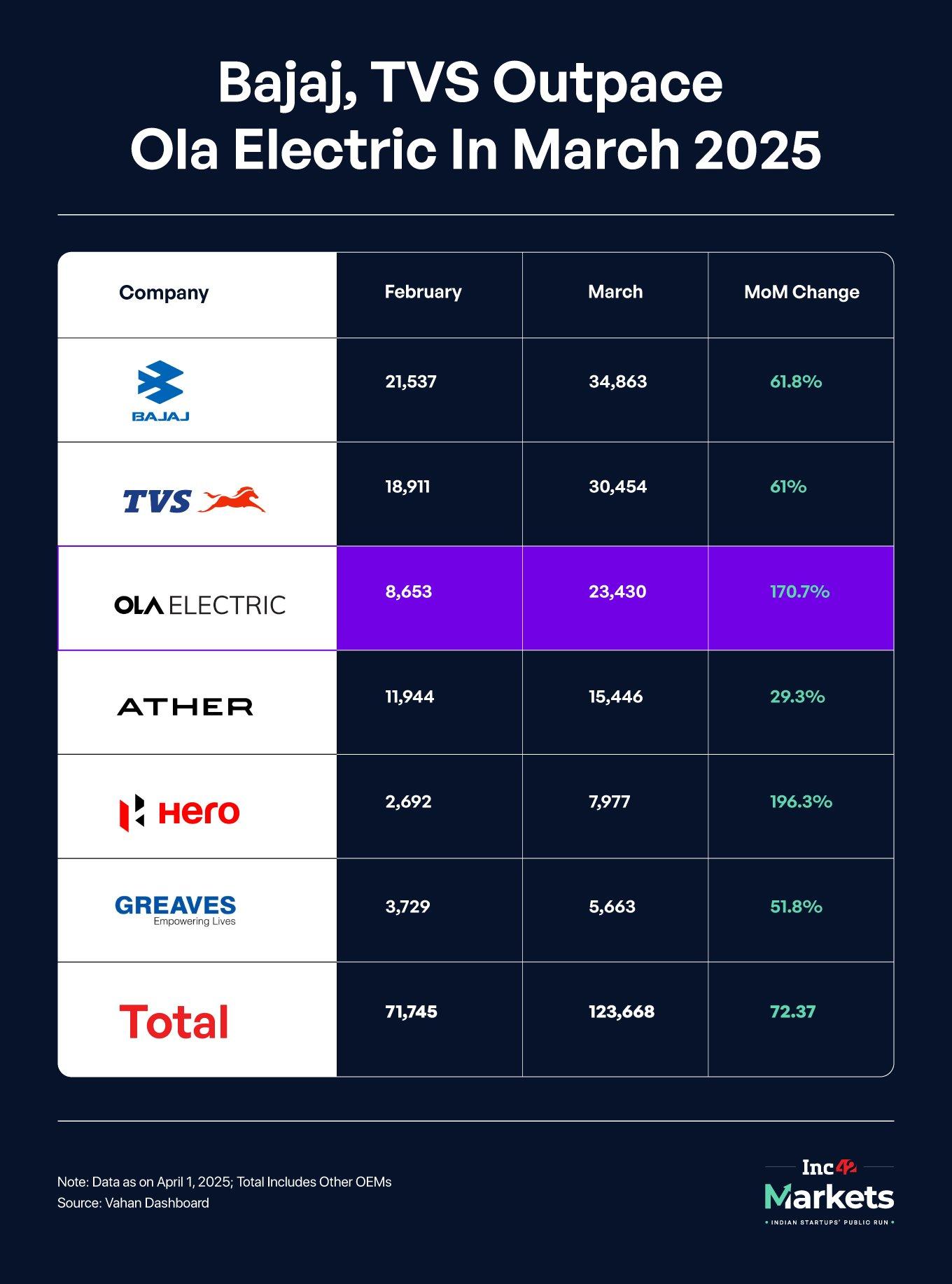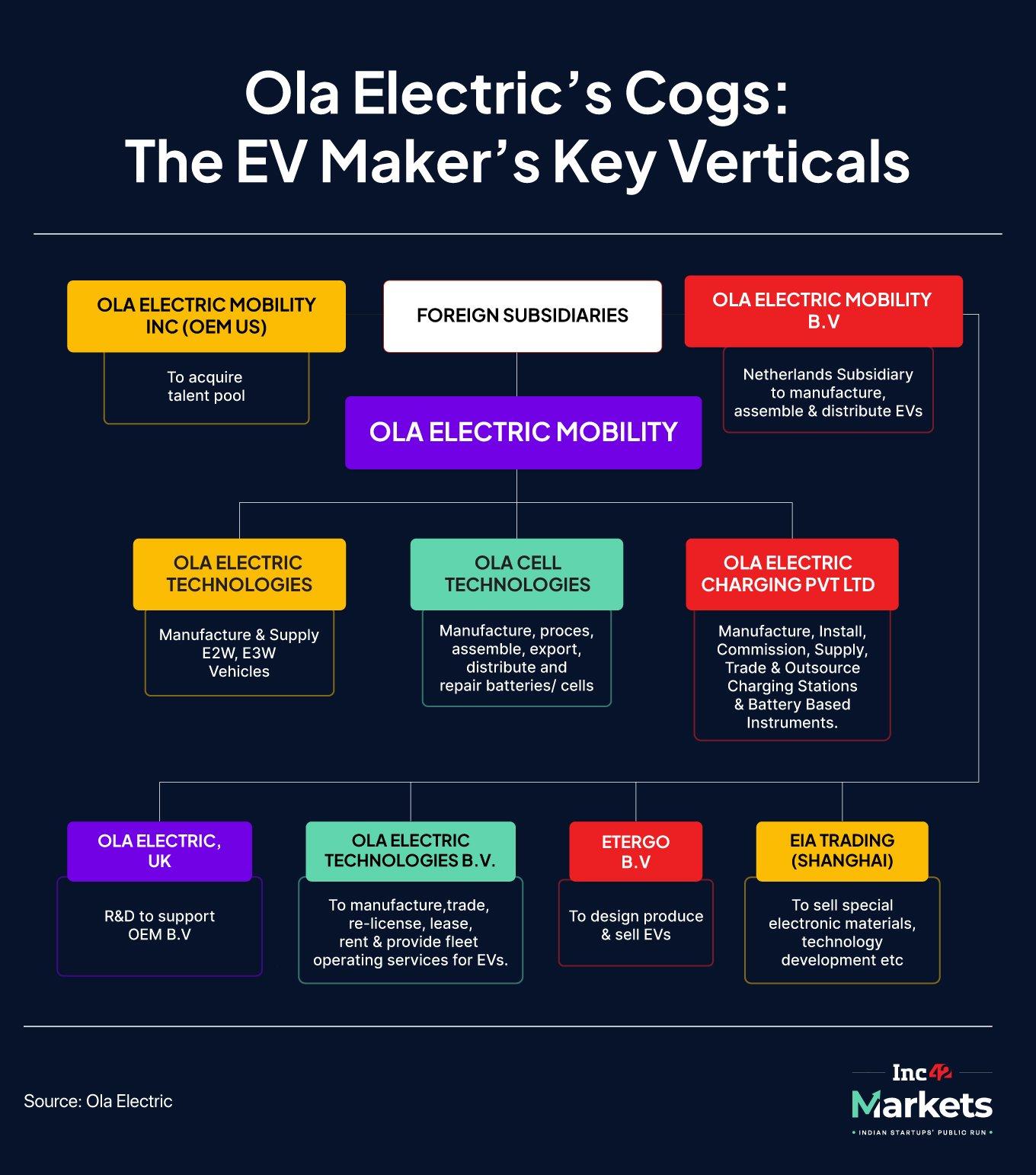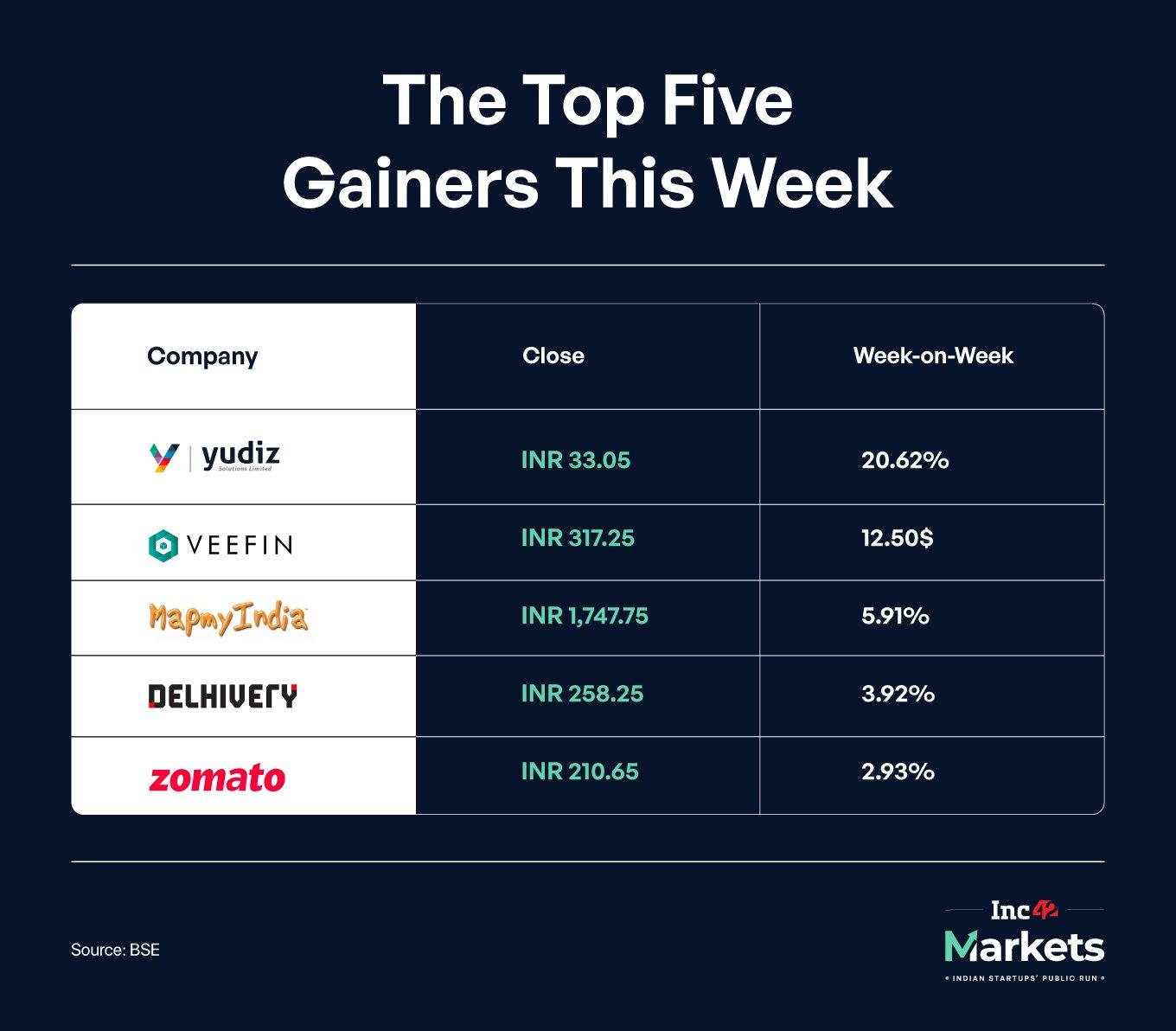Ola Electric seems to be on the cusp of a transformation. And we don’t necessarily mean with the number of scooters sold, its or the upcoming motorbikes. The Bhavish Aggarwal-led giant’s focus is turning to something that could open up a bigger market: battery and cell manufacturing.
With a proposed investment of INR 200 Cr in the battery subsidiary, Ola Electric is looking to take some of the focus away from sales figures in a competitive EV two-wheeler market, and is instead looking to not only improve its margins but contribute to India’s battery supply chain ecosystem as well.
To be clear, battery manufacturing has always been on the cards for Ola Electric. But this is the first big push we have seen from the company after it brought on board some bigwigs to lead this business in the pre-IPO days.
For instance, Hyun Shik Park, previously head of cell operations at LG’s so-called Mother Factory in South Korea, now leads the Ola Cells Gigafactory and is a critical link in Ola’s battery push given his prowess.
Now that Ola Electric is well into its life as a public company though, this push is a sign that relying on the sales prowess and building up a user base was not quite enough. To be clear, Ola Electric’s customer base is still strong, but now as Aggarwal & Co have come under competitive pressure, the focus needs to turn to the full EV stack.
Bajaj Auto and TVS Motor surpassed Bhavish Aggarwal-led Ola Electric in terms of electric scooter sales in March, continuing their dominance in the segment. Bajaj Auto , with registrations of its Chetak electric scooters surging nearly 62% to 34,863 units last month from 21,537 units sold in February.
Ola Electric’s net loss surged 50% year-on-year (YoY) to INR 564 Cr in Q3 FY25, while revenue from operations declined 19% YoY to INR 1,045 Cr.

Over the past three months, the OEM has been dousing fires on multiple fronts, including regulatory scrutiny, mounting losses, dwindling stock price, among others. It relied on cutting service and warranty related expenses to the tune of INR 32 Cr per month, and reduced its headcount to effectively save INR 29 Cr per month, according to the company.
In the meanwhile, the company’s shares have slumped over 32% over the past three months, and have been under the INR 60 mark since late February. With the new HyperDelivery model and the investment in scaling up battery manufacturing, Ola Electric would be hoping that
Ola Electric’s Season Of WoesLargely to blame for this spiral are the raids at Ola Electric’s stores by state government departments in Madhya Pradesh and Maharashtra and other states in February and March. This saw authorities impounding scooters and reports claimed a majority of the company’s 4,400 stores were operating without necessary trade certificates.
While Ola has denied these allegations, reports, as recently as this week, suggested authorities in Maharashtra are continuing to look into stores being operated potentially without licences. Ola Electric is likely to respond to the latest notice from the state government next week.
In addition, the heavy industries and transport ministries over alleged discrepancies between its reported sales figures and actual vehicle registrations in February.
While these concerns are likely to be solved in the near future, Ola Electric’s focus is beyond that. Unlike peers such as Ather Energy or even Bajaj and TVS, Ola is manufacturing its own cells. It is worth noting that building cells in India is extremely important for the company from a strategic point of view because this was always the end goal for Aggarwal.

For every INR 100 spent on an electric scooter, over INR 32 goes towards importing cells and other components. Since March 31, 2024, Ola Cell Technologies has developed the capability to produce 1.4 GWh at the company’s Gigafactory in Krishnanagar, Tamil Nadu, located near the Ola Futurefactory.
This is not enough in the short term. In the past, Ola Electric had revealed plans to invest heavily in cell manufacturing till 2027 to meet the targets per year as promised under the PLI scheme to the Indian government.
The most recent investment in the battery manufacturing business is just the first step. Ola Electric is expected to continue investing in this business to increase production capacity to not just meet its internal demand but also supply to the rest of the industry.
As for the sales dip, Ola Electric has touted its HyperDelivery model as a saviour. Questions sent to Ola Electric about more context on the model and how exactly it is leveraging AI to solve the friction did not elicit a response. We will update this story if the company sends us the responses.
Here it’s important to note how exactly Ola Electric’s new HyperDelivery model fits with its company-owned stores approach. Since late last year, Ola Electric has added close to 3,000 new stores to its network, and each of these also has service facilities for customer support.
Some of the larger stores act like dealerships for Ola Electric, stocking scooters from the factory and delivering them to customers after registration. Now same-day delivery of scooters is not new, but same-day registration is something that has the potential to completely disrupt the market. Usually, there’s some friction between OEMs and dealerships in terms of data and customer details, which leads to delays in registration.
But with Ola Electric being both the OEM and the dealer, this could indeed be streamlined to a certain degree. Whether it will always follow the same-day rule is hard to tell.
However, we have now seen a problem arise with how Ola expanded its stores in terms of the trading licence. Ola Electric sought complete ownership of the sales experience, and absorbing the registration process internally could lead to similar woes. The question also is will Ola Electric’s process comply fully with registration norms?
The market’s reaction to Ola Electric’s investments and the March sales figures will come over the course of the first month of the new fiscal year. And after that, a lot will rest on how impactful the cost-cutting of the past quarter has been. Crunch time for Aggarwal & Co as they face the public markets litmus test once again.
Stock In Focus: ZomatoThis week, Zomato did what not many expected Zomato to do, but the signs were there. Amid slowing growth in its food delivery vertical and rising competition in the quick commerce space, foodtech giant Zomato from its customer support team.
The company is leveraging AI to automate its customer support functions to trim costs, but the market was not convinced with this cost-cutting step quite as expected.
Zomato is expected to allow its AI-based product Nugget run the customer support show for now, but these are sensitive times in terms of market share in the food delivery and quick commerce space, so any drawbacks in customer retention could hurt Zomato badly.
However, lower costs are typically welcomed by investors, and that’s one of the reasons why Zomato had a bright start to the week. Will Zomato see another big rally in the coming weeks just as we saw in the early days of 2024, or will that entirely depend on the company’s Q4 results?

- FirstCry has transferred the first tranche of the INR 146 Cr infusion in the house of brands, with an investment of INR 73 Cr, as the ecommerce giant looks to diversify its revenue mix
- Sachin Bansal-led fintech unicorn Navi is looking to get listed on the bourses in the current fiscal year, the founder said during a session at the Startup Mahakumbh
- Swiggy has received a tax demand notice from the Income Tax Department to pay INR 158 Cr for allegedly miscounting deductions for cancellation charges paid to merchants
- Digital lending startup Kissht is gearing up for a public offering of $225 Mn with ICICI Securities, UBS Securities, and Motilal Oswal expected to lead the IPO
The post appeared first on .
You may also like

CM Revanth Reddy shares lunch with rice scheme beneficiary in Telangana

IPL 2025: MI vs RCB Match 20 - Who will be Impact Players for today's match?

Ambulances gifted by India help Sri Lanka save 1.5 million lives

Who is Brooke Rollins? Trump's new agri secretary at heart of tariff policy debate

14-year-old Palestinian holding American citizenship killed by Israeli Forces in West Bank






